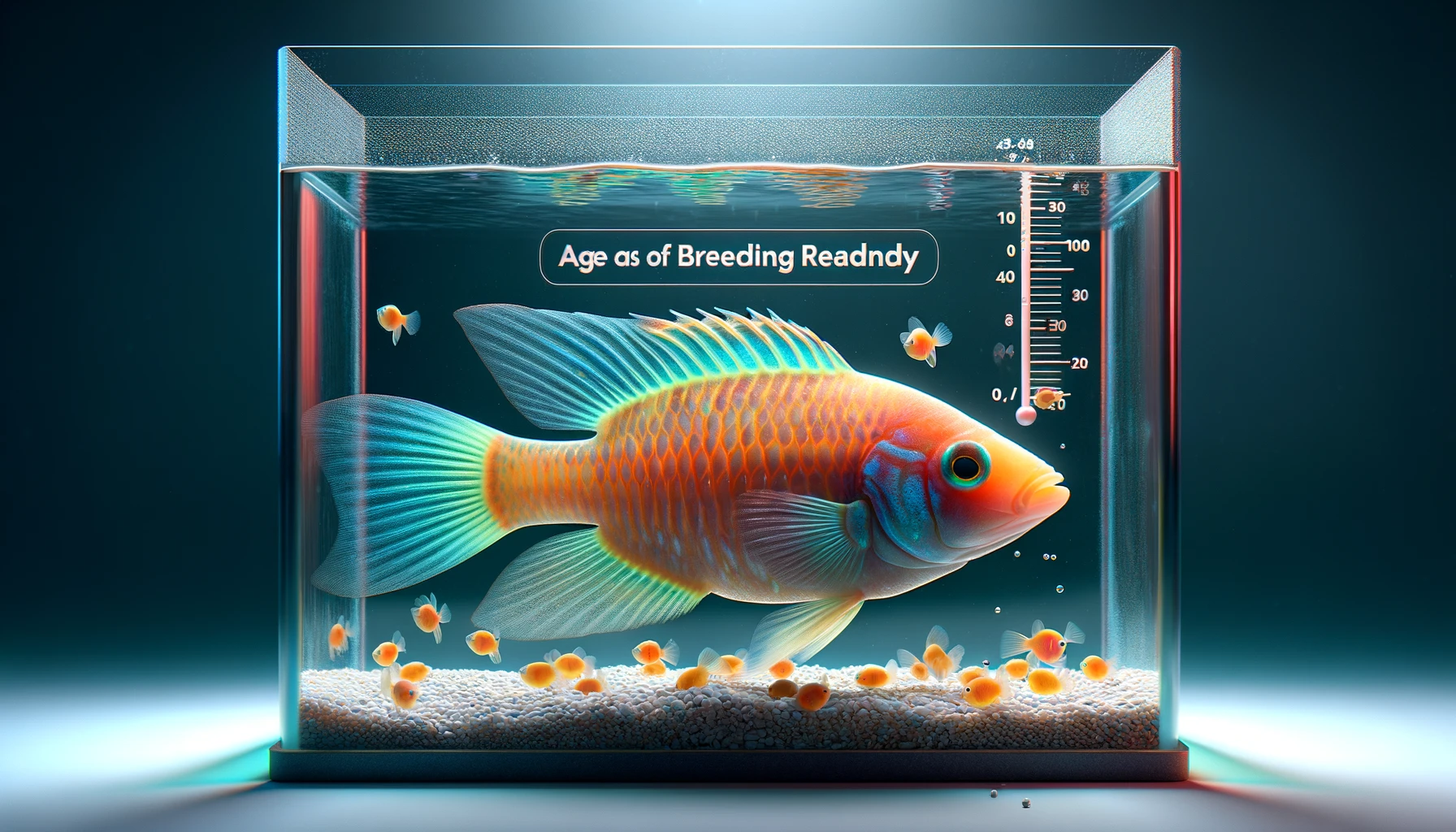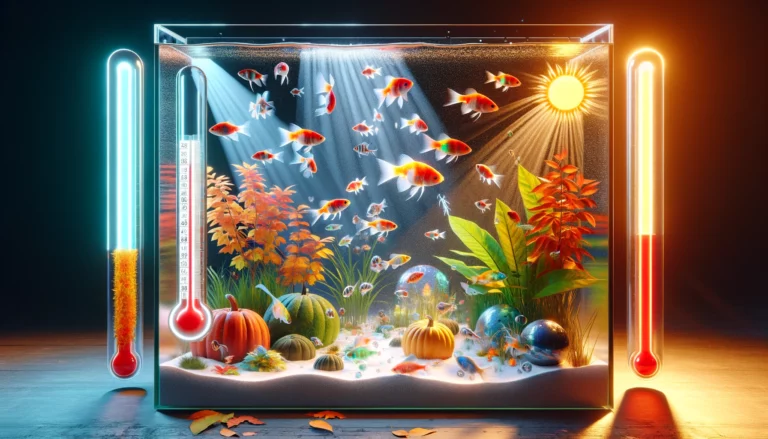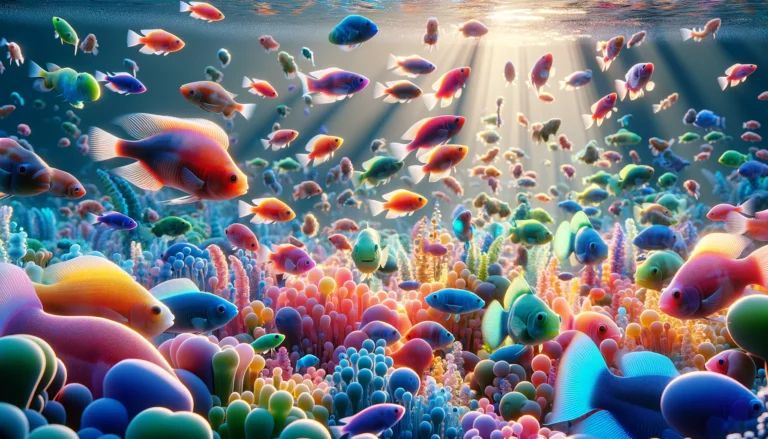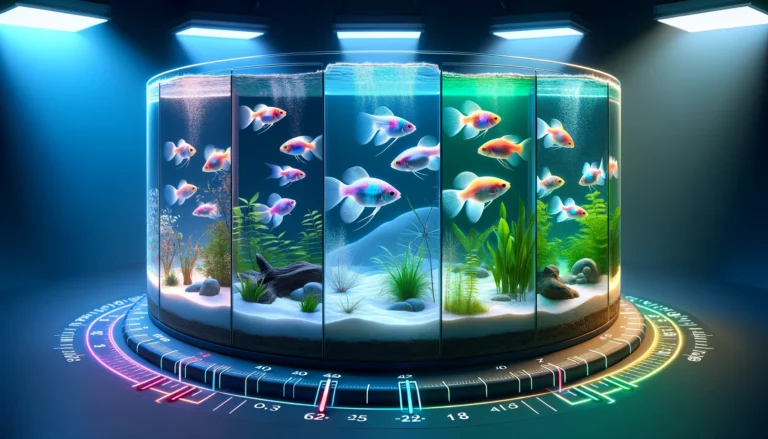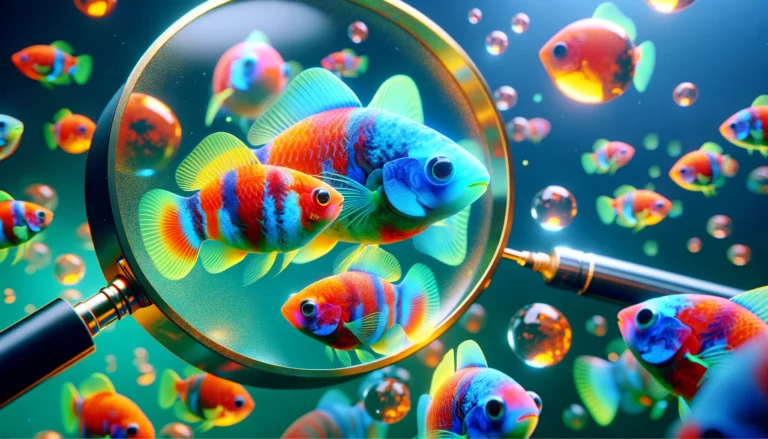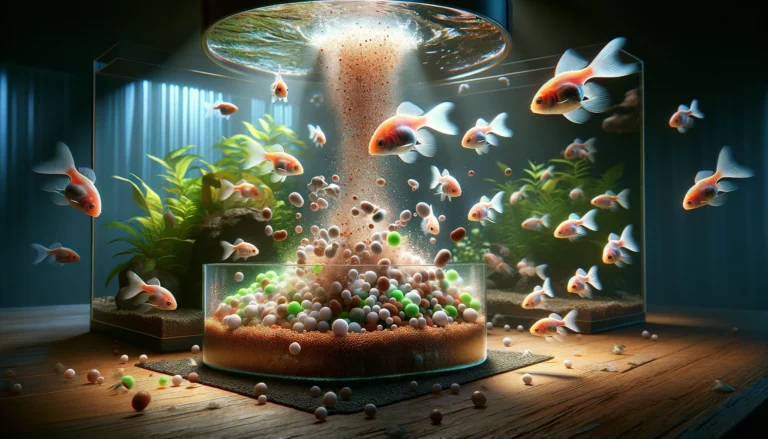Assessment of GloFish readiness for reproduction
Welcome to the fascinating world of GloFish! Keeping a vibrant and healthy GloFish population starts with understanding their reproduction. These aren’t your ordinary fish. GloFish are specially bred for their bright, neon colors. This unique glow comes from the addition of natural fluorescence genes.
GloFish have gained immense popularity among aquarium enthusiasts. Their striking colors add a mesmerizing beauty to any tank. But their care involves more than just admiring their glow. Knowing when and how they reproduce is crucial.
Breeding GloFish responsibly ensures the health and vitality of your aquatic pets. It helps maintain a balanced ecosystem in your aquarium. Plus, it’s a rewarding experience to see the cycle of life unfold in your own tank.
Whether you’re a beginner or an experienced aquarist, understanding GloFish reproduction is key. It’s not just about the glow, it’s about fostering a thriving environment for these unique creatures. Let’s dive into the world of GloFish reproduction and learn how to support these dazzling fish in their life cycle.
Evaluate GloFish breeding readiness: Maintain 78-82°F temp, 6.8-7.5 pH, 5-19 dGH hardness. Feed high-protein diet incl. brine shrimp, bloodworms. Provide plants, caves for ideal spawning.
Understanding the Life Cycle of GloFish
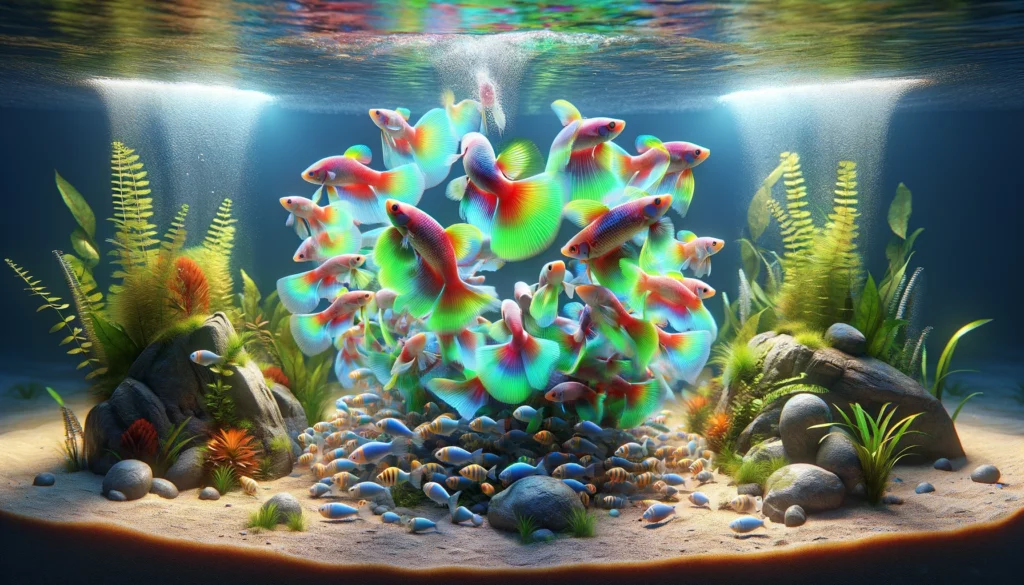
GloFish, like their natural counterparts, go through a specific life cycle. This cycle includes birth or hatching, growth, maturity, reproduction, and eventually, senescence. The reproduction phase is a critical part of their life cycle. It ensures the continuation of their vibrant lineage in your aquarium.
The journey begins when GloFish are either born live (in the case of GloFish sharks and tetras) or hatched from eggs (like GloFish danios and barbs). After birth or hatching, they enter a rapid growth phase. During this time, they develop their distinctive colors and features.
GloFish typically reach reproductive maturity within a few months. For example, GloFish danios can start reproducing as early as three to four months of age. However, the optimal breeding age varies among species. It’s important to research the specific needs of your GloFish species.
Breeding readiness can be influenced by various factors, including water conditions, diet, and the fish’s overall health. A balanced diet and stable, clean water conditions can help encourage breeding behaviors. Recognizing the signs of maturity and providing the right environment are key to successful breeding.
In summary, understanding the life cycle of GloFish, especially their reproductive stage, is essential for any aquarist looking to breed them. By ensuring your fish are healthy and mature, you’ll be better prepared to support their breeding process and enjoy the growth of your GloFish family.
Signs of Readiness for Reproduction
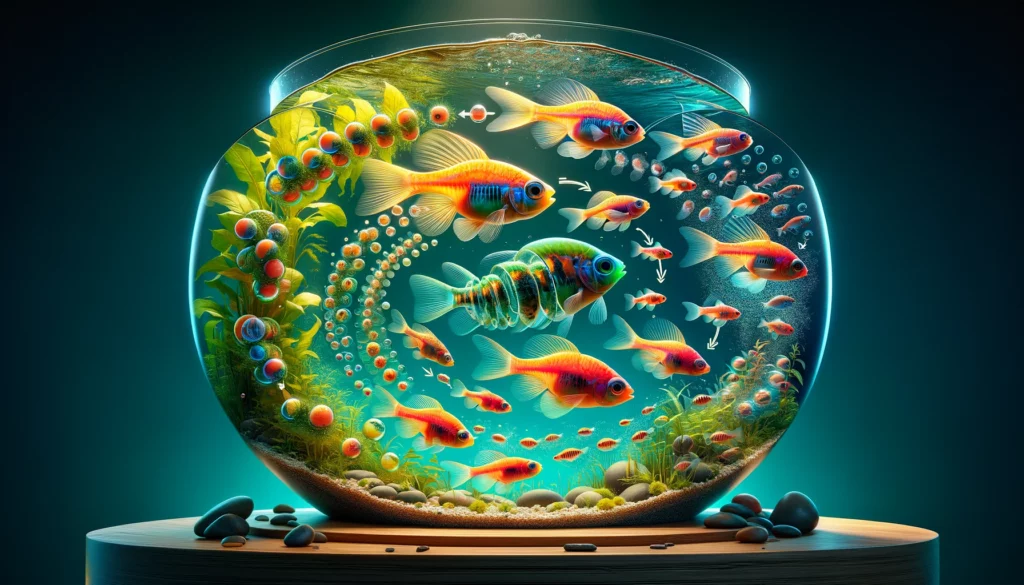
Identifying when GloFish are ready to reproduce involves observing both visual and behavioral signs. These signs can guide you in providing the right conditions for breeding.
Visually, female GloFish preparing for egg-laying may show a noticeable increase in belly size. This swelling is due to the development of eggs inside her body. It’s a clear indication that she might soon lay eggs. The belly becomes fuller and more pronounced, making it a reliable sign to look out for.
Behaviorally, GloFish display distinct changes when ready to breed. Males often perform courtship dances to attract females, a fascinating display of nature’s rituals. They may also show increased activity around females, swimming closer and more frequently than usual. This heightened interaction is not just playful; it’s a precursor to spawning.
The aquarium conditions play a crucial role in triggering reproductive behaviors. Water temperature and lighting are particularly influential. A slight increase in temperature can mimic the onset of the breeding season, encouraging GloFish to start the reproduction process. Similarly, extended light periods can stimulate breeding behaviors, as it simulates the longer daylight hours of spring and summer.
Adjusting these environmental factors can help encourage your GloFish to breed. However, it’s important to research and replicate the specific conditions your species of GloFish naturally responds to. By closely monitoring these signs and understanding the needs of your GloFish, you can create an optimal breeding environment in your aquarium.
Creating Optimal Conditions for Reproduction
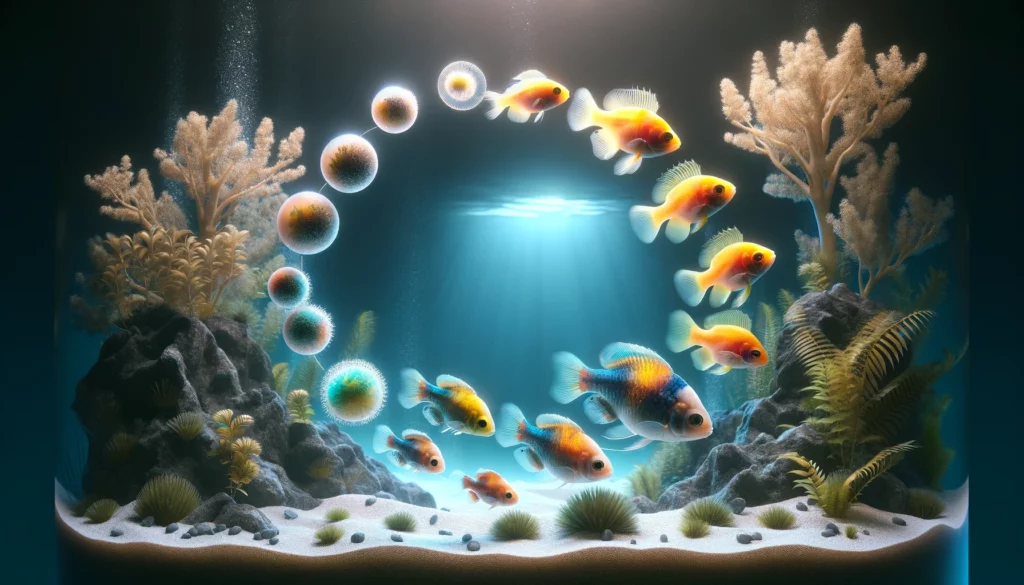
To successfully breed GloFish, preparing the aquarium with the right conditions is crucial. Setting up an environment that mimics their natural habitat encourages breeding.
Firstly, water parameters should be closely monitored and adjusted to suit the specific needs of your GloFish species. This usually means maintaining a slightly warmer temperature, as warmer water can simulate the breeding season. The ideal temperature range varies by species but generally falls between 78 to 82 degrees Fahrenheit. The pH level should also be kept stable, typically around 6.8 to 7.8, depending on the species.
| Aspect | Description |
|---|---|
| Water Parameters | Monitor and adjust temperature (ideally 78-82°F) and pH (typically 6.8-7.8) to mimic the species’ natural habitat and simulate the breeding season. |
| Decorations and Plants | Dense vegetation and hiding spots provide shelter and egg-laying sites. Live plants contribute to water quality and natural aesthetics. |
| Adding breeding caves or structures encourages spawning behavior, especially in species that prefer secluded areas. | |
| Safe Space for Eggs and Fry | Use a breeding tank or separate area with protective mesh to prevent adult fish from eating eggs and fry. |
| Water Quality Maintenance | Regular water changes, proper filtration, and avoiding overcrowding reduce stress on fish, promoting successful breeding. |
| Maintaining excellent water quality is crucial for a stress-free environment, essential for successful breeding and offspring health. |
Decorations and plants play a significant role in creating a conducive breeding environment. Dense vegetation and hiding spots can provide shelter for the fish and a place for laying eggs. Live plants, in particular, not only add to the natural beauty but also help maintain water quality. Adding breeding caves or similar structures can encourage spawning behavior, especially for species that prefer secluded spots for egg-laying.
The importance of creating a safe space for eggs and fry cannot be overstated. Eggs are often vulnerable to being eaten by adult fish, including their parents. To protect them, you can use a breeding tank or a separate area within the main aquarium equipped with a protective mesh or separator. This allows water to flow through while keeping the eggs and later, the fry, safe from adult fish.
Additionally, maintaining excellent water quality is essential. Regular water changes, proper filtration, and avoiding overcrowding can reduce stress on the fish, making them more likely to breed. A stress-free environment is key to successful breeding.
By carefully adjusting these aspects of your aquarium, you provide a supportive environment for GloFish to reproduce. This not only helps in the successful breeding of GloFish but also ensures the health and safety of the offspring, allowing you to enjoy the growth of your aquatic family.
The Breeding Process
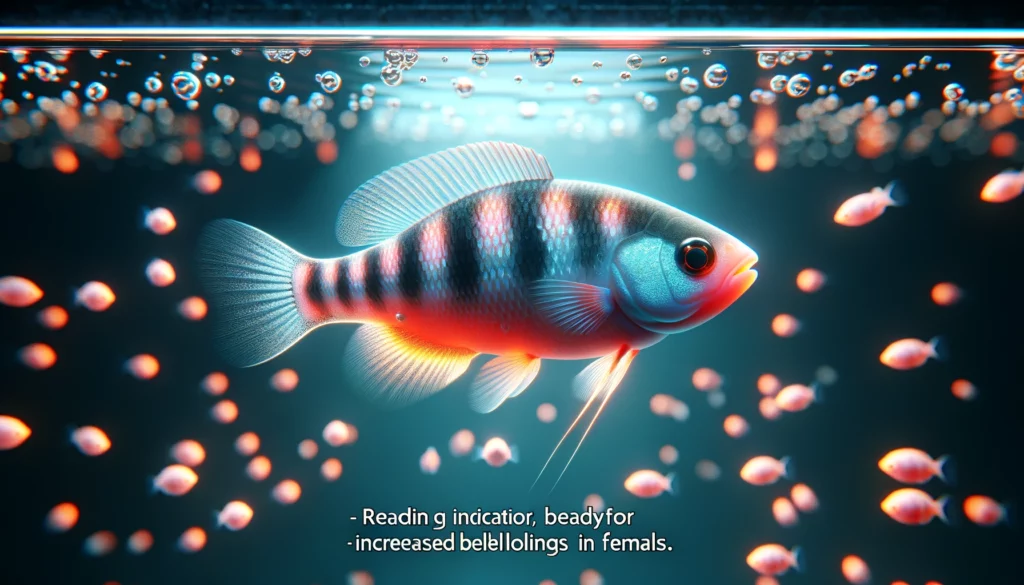
The breeding process for GloFish involves specific behaviors and steps, from courtship to the care of the offspring. Understanding these steps is key to successful breeding.
Courtship behavior often precedes spawning. Males may display vibrant colors and perform dances to attract females. Once a female accepts the male’s advances, they move to a quiet, secluded spot for egg-laying. In species like GloFish danios, females scatter their eggs among plants or on the substrate, where the male then fertilizes them externally.
After egg-laying, immediate care for the eggs and fry is crucial. Eggs need a safe environment to develop properly. For many GloFish species, removing the adult fish from the breeding tank is necessary to prevent them from eating the eggs. The breeding tank should have a gentle filtration system to keep water clean without endangering the eggs or fry with strong currents.
Temperature and cleanliness are critical during this stage. Keeping the water at a stable, warm temperature helps ensure healthy development. Regular water changes and monitoring for fungal growth on unhatched eggs are also essential practices. Some breeders use antifungal treatments as a precaution.
| Breeding Step | Description |
|---|---|
| Courtship Behavior | Males display vibrant colors and perform dances to attract females. |
| Females accept the male’s advances, leading to spawning. | |
| Spawning | Occurs in a quiet, secluded spot where females scatter their eggs among plants or substrate, fertilized externally by the male. |
| Care of Eggs and Fry | Immediate care is crucial. Adult fish may need to be removed to prevent egg consumption. |
| Breeding tank requires gentle filtration to keep water clean without endangering eggs/fry. | |
| Temperature and Cleanliness | Stable, warm temperature is critical for healthy egg development. |
| Regular water changes and monitoring for fungal growth are essential. | |
| Some breeders use antifungal treatments as a precaution. | |
| Care of Fry | Fry are initially fed commercially available fry food or infusoria, gradually transitioning to brine shrimp nauplii. |
| Fry tank should have hiding places and optimal conditions, with extra attention to water quality and food size. | |
| Breeding Process Conclusion | Breeding GloFish is a responsible and rewarding experience, contributing to the health and diversity of the aquarium population. Proper monitoring and maintenance are key to nurturing vibrant creatures from egg to adulthood. |
Once the eggs hatch, the fry are extremely vulnerable and require special care. Initially, they can be fed commercially available fry food or infusoria, gradually moving to brine shrimp nauplii as they grow. The fry tank should have plenty of hiding places and be kept at optimal conditions, similar to the adults but with extra attention to water quality and food size.
The process of breeding GloFish and caring for their young is both a responsibility and a joy. By closely monitoring and maintaining the right conditions, you can witness the fascinating cycle of life in your aquarium. This not only contributes to the health and diversity of your GloFish population but also offers a rewarding experience as you nurture these vibrant creatures from egg to adulthood.
Conclusion
Breeding GloFish is a rewarding journey that begins with understanding their signs of readiness and creating the right environment for their reproduction. Observing the subtle changes in behavior and appearance of your GloFish can greatly increase the chances of successful breeding. By providing optimal water conditions, a well-structured habitat, and a stress-free environment, you pave the way for the natural processes of courtship and spawning to take place.
The efforts don’t stop at setting up the environment. The care and attention needed for the eggs and the fry are crucial for their survival and growth. This involves not only protecting them from potential threats but also ensuring they receive the appropriate nutrition for healthy development.
Breeding GloFish offers a unique opportunity to witness the marvels of aquatic life right in your home aquarium. It’s a process that requires patience, diligence, and a deep understanding of the needs of these vibrant creatures. But the rewards, from observing the fascinating behaviors of GloFish to nurturing their next generation, are immensely satisfying.
We encourage you to share your experiences, tips, and stories about breeding GloFish in the comments or on social media. Your insights can help others in the community and spread the joy of keeping and breeding these dazzling aquatic pets. Whether you’re a seasoned aquarist or just starting, there’s always something new to learn and share about the wonderful world of GloFish.
GloFish Breeding F.A.Q.
1. How can you differentiate between male and female GloFish to prepare for breeding?
Male GloFish often have brighter colors and slimmer bodies, while females tend to be larger with a more rounded abdomen, especially when ready to breed. Specific differences can vary by species, so it’s important to research the characteristics of your particular GloFish.
2. What are the common mistakes to avoid when trying to breed GloFish in a home aquarium?
Avoiding poor water quality, insufficient space, and incorrect temperature settings are crucial. Additionally, not providing enough hiding spaces for fry or ignoring the dietary needs of breeding GloFish can lower your success rate.
3. How do you adjust the diet of GloFish to enhance their fertility and readiness for breeding?
Offer a varied diet that includes high-quality flakes, pellets, and live or frozen foods like brine shrimp or bloodworms. Nutrient-rich foods can improve overall health and increase the chances of successful breeding.
4. Can GloFish of different colors breed together, and if so, what color will the offspring be?
Yes, GloFish of different colors can breed together. The offspring’s color will depend on the genetic makeup of the parents, often resulting in a mix of the parents’ colors or dominant color traits.
5. What are the signs of unsuccessful spawning, and how can you address them?
Unsuccessful spawning may be due to stress, poor water conditions, or incompatible mates. Addressing these issues by improving the environment and ensuring compatibility and comfort can help increase success rates.
6. How long does it typically take for GloFish eggs to hatch, and what factors can affect this duration?
GloFish eggs typically hatch within 24-72 hours, depending on the species and water temperature. Keeping the water temperature stable and within the optimal range for your GloFish species can ensure timely hatching.
7. What specific environmental changes can significantly increase the breeding success rate of GloFish?
Adjusting water temperature slightly higher (within species-specific safe ranges), increasing the light period to mimic longer daylight hours, and providing a rich diet can all enhance breeding success. Ensuring a stress-free environment with plenty of hiding spots is also key.
8. How do you manage the population in a mixed-species aquarium to ensure healthy breeding conditions for GloFish?
Regularly monitor the population density and provide adequate space for each fish. Implementing breeding tanks for specific species can help manage breeding more effectively and prevent overcrowding.
9. After breeding, how do you reintegrate GloFish parents and their fry into the main aquarium without stress?
Gradually acclimate the fry to the main tank conditions by introducing them in a breeding box or separate enclosure within the tank. This allows both fry and adults to adjust to each other’s presence safely.
10. What ethical considerations should be kept in mind when breeding GloFish, given their genetic modifications?
Consider the welfare of the fish, avoiding overbreeding and ensuring that all offspring can be adequately cared for. It’s also important to comply with local regulations regarding the breeding and sale of genetically modified organisms.

